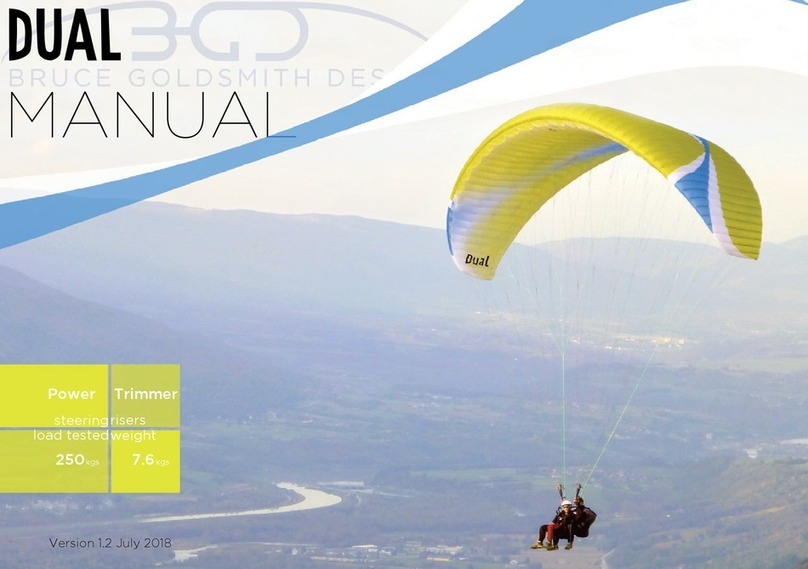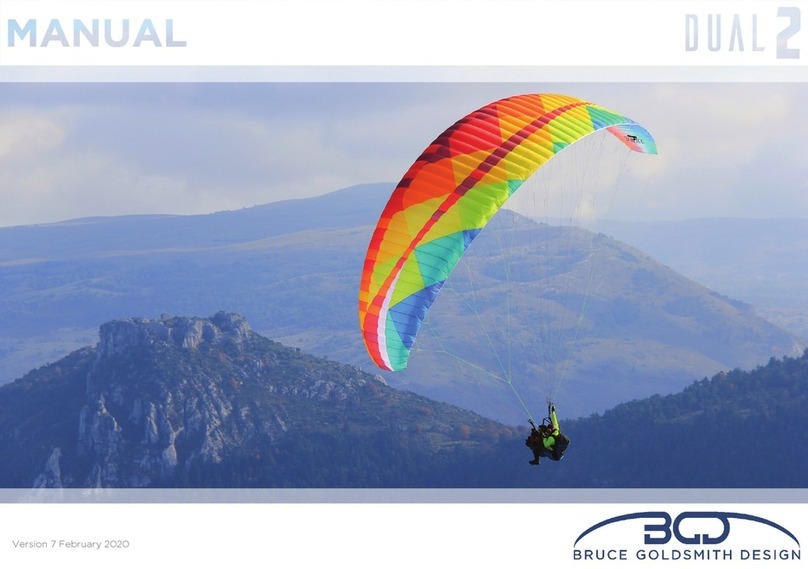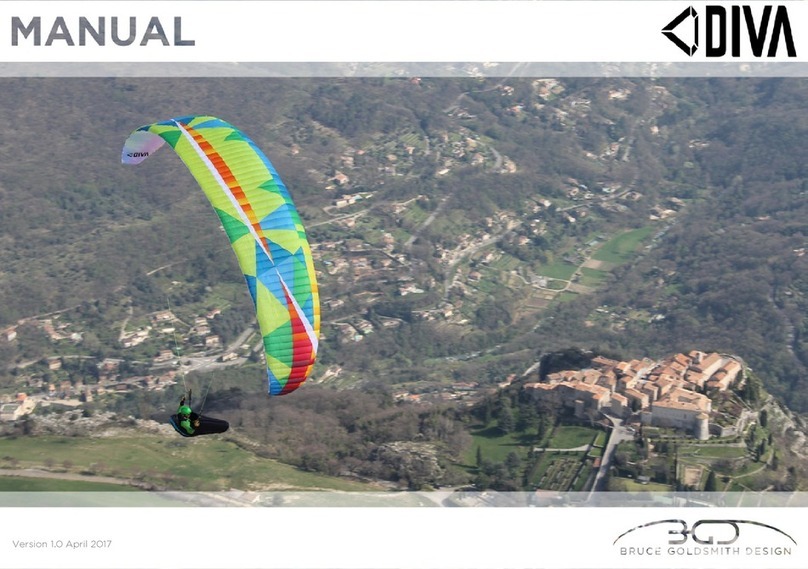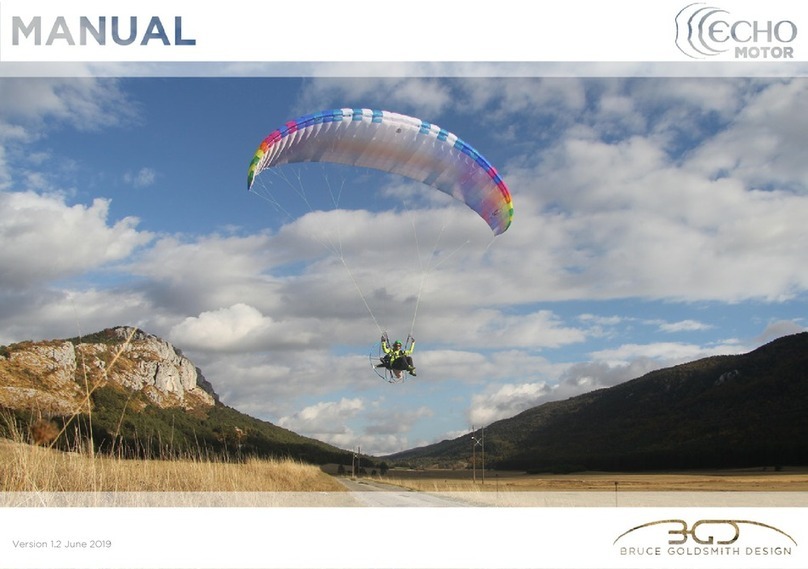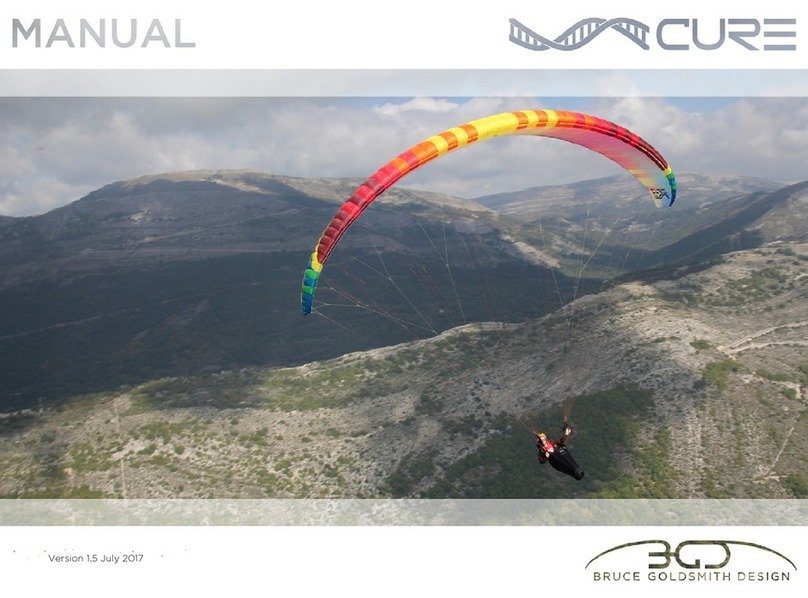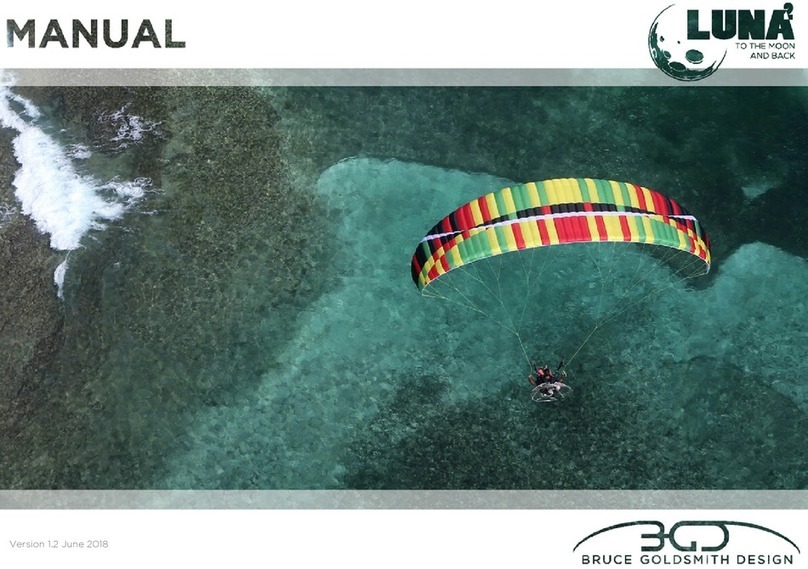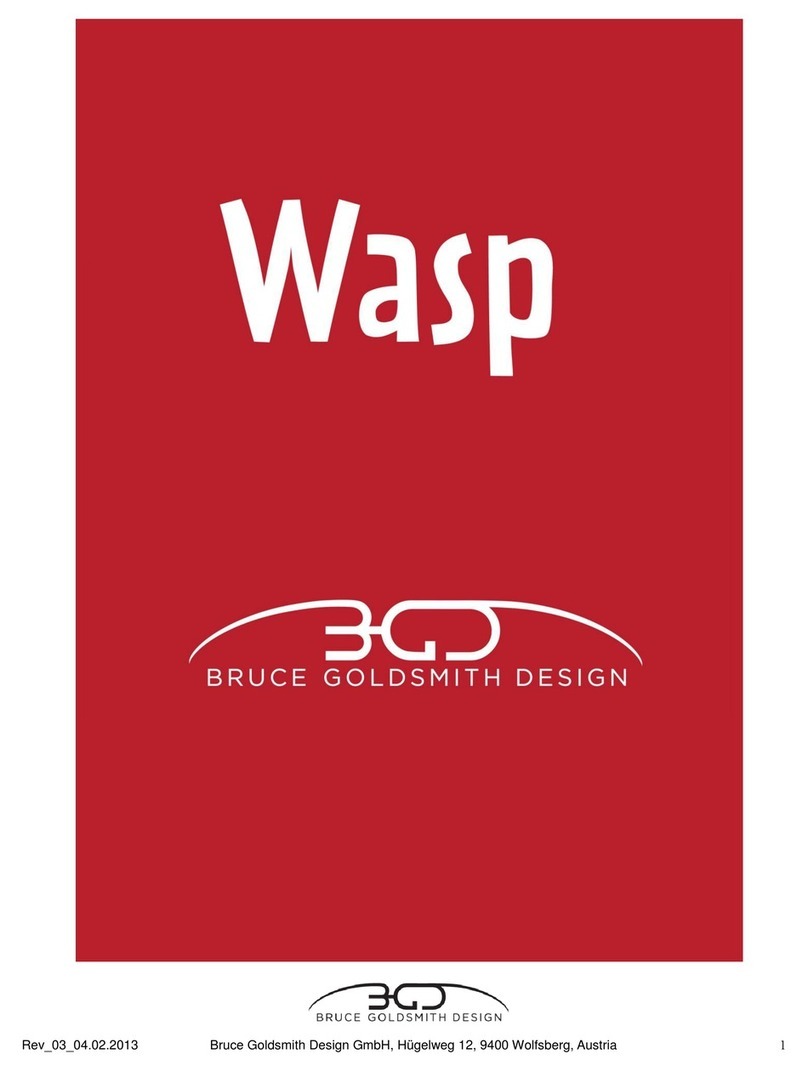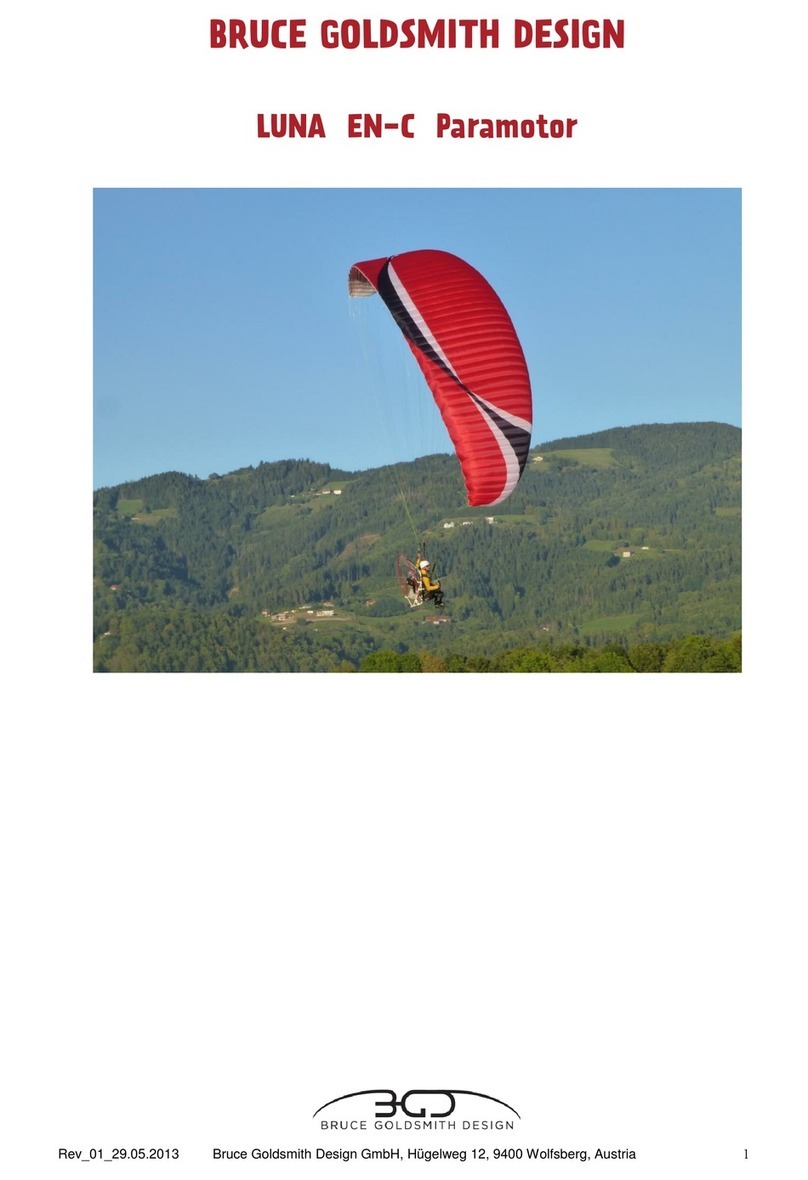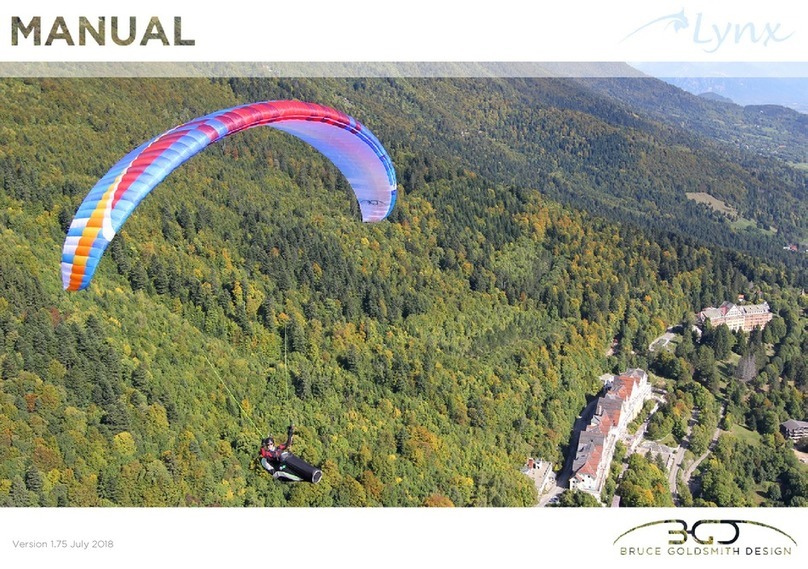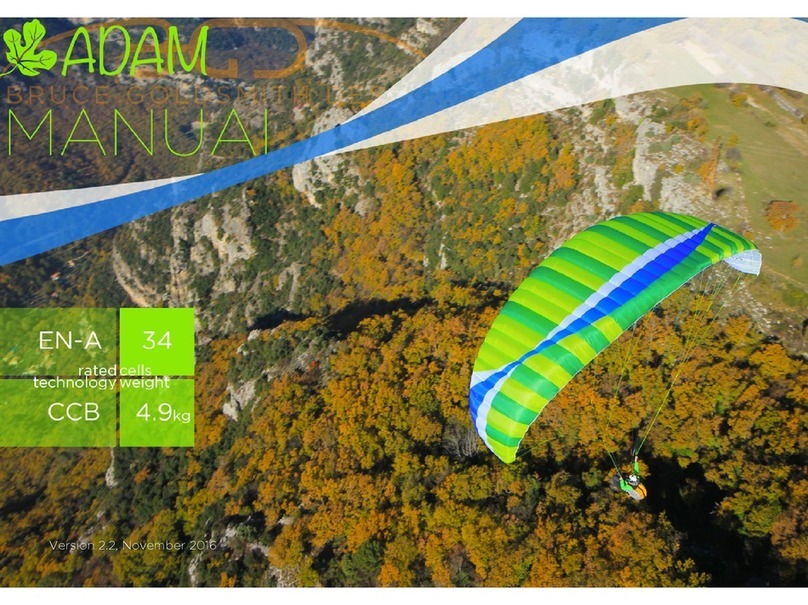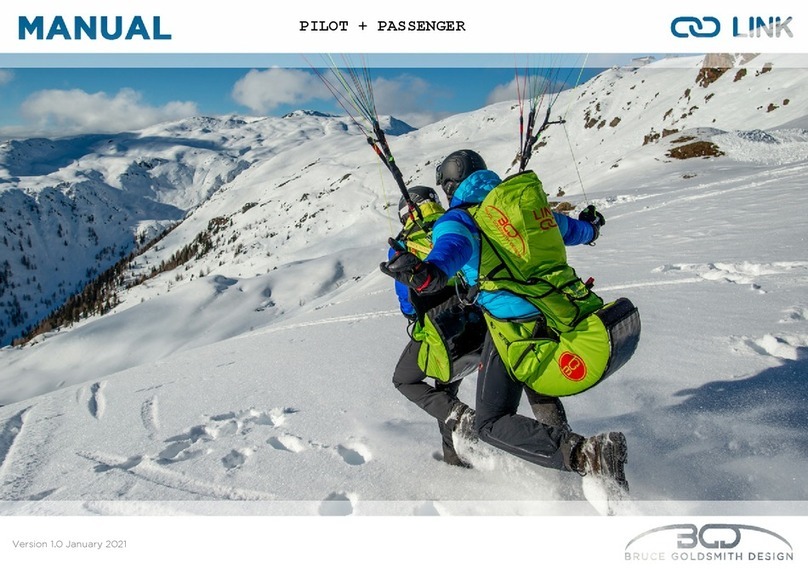
2
ANDA manual EN-v1.01 January 2023
Welcome ............................................................................ 4
Introduction ......................................................................... 5
Limitations ....................................................................... 5
Test ight and Warranty........................................... 6
Weight Range ................................................................ 6
Modications .................................................................. 7
Brake line lengths......................................................... 7
Harness Dimensions.................................................... 7
Preparation / Pre-Flight Checks ............................... 8
Connecting the speedbar......................................... 8
Preparation on launch................................................ 9
Pre-ight inspection.................................................... 9
Flight Characteristics ...................................................... 11
Launch .............................................................................. 11
Straight Flight ............................................................... 12
Turning ............................................................................. 12
Active piloting .............................................................. 12
Thermalling ..................................................................... 13
Speed System ............................................................... 13
Rapid descent procedures....................................... 14
Landing ............................................................................ 16
Recovery Techniques ...................................................... 17
Stalls .................................................................................. 17
Spins .................................................................................. 18
Contents
Contents
